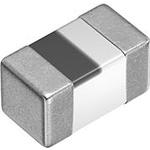
MLG1005SR10JT000









Inductor High Frequency Chip Unshielded Multi-Layer 0.1uH 5% 100MHz 8Q-Factor Ceramic 0.2A 2Ohm DCR 0402 T/R
Sourceability North America, LLC
9715 Burnet Rd, Ste 200 Austin, TX 78758-5215As a typical representative of the subcategory Inductors, MLG1005SR10JT000 is used to control the level of current and voltage in electrical circuits. Its ensures stable resistance, which is critical for precise measurements and component protection.
MLG1005SR10JT000 from the category Passives and subcategory Inductors TDK CORP provides precise current limitation in the scheme. Thanks to its Inductor High Frequency Chip Unshielded Multi-Layer 0.1uH 5% 100MHz 8Q-Factor Ceramic 0.2A 2Ohm DCR 0402 T/R, it contributes to stable operation of electronic devices, preventing overloads and voltage fluctuations.
You can download the user manual and technical specifications for MLG1005SR10JT000 in the documentation section.
Inductor High Frequency Chip Unshielded Multi-Layer 0.1uH 5% 100MHz 8Q-Factor Ceramic 0.2A 2Ohm DCR 0402 T/R